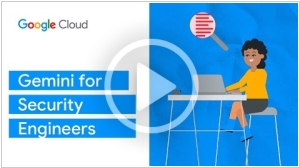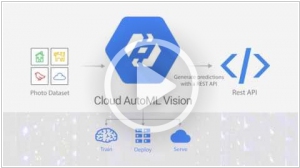Google Cloud Platform vs VMware vCloud
August 19, 2023 | Author: Michael Stromann
16
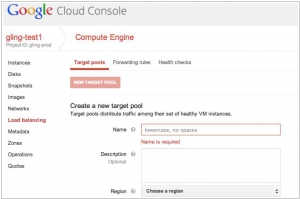
Google Cloud Platform is a set of modular cloud-based services that allow you to create anything from simple websites to complex applications. Cloud Platform provides the building blocks so you can quickly develop everything from simple websites to complex applications. Explore how you can make Cloud Platform work for you.
11
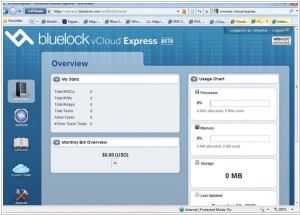
Start moving toward secure cloud computing with VMware vCloud solutions and services. Leverage the power of cloud computing while retaining the flexibility and open standards to support your existing IT infrastructure. Enabling IT as a service through cloud computing gives you a more efficient, flexible and cost-effective model.
Google Cloud Platform (GCP) and VMware vCloud are both cloud computing platforms, but they have different approaches and feature sets. GCP is a public cloud platform that offers a broad range of cloud services, including virtual machines, storage, networking, databases, and machine learning. It provides scalable infrastructure and advanced data analytics capabilities, making it suitable for organizations looking to leverage cloud technology for their applications and data. GCP emphasizes flexibility, scalability, and extensive integration with other Google services. On the other hand, VMware vCloud is a private cloud platform that enables organizations to build and manage their own virtualized infrastructure within their data centers. It offers features like virtual machines, software-defined networking, storage, and security. VMware vCloud is designed for businesses seeking to optimize their existing infrastructure and maintain control over their cloud environment.
See also: Top 10 Public Cloud Platforms
See also: Top 10 Public Cloud Platforms
Google Cloud Platform vs VMware vCloud in our news:
2024. Google injects generative AI into its cloud security tools
Google has rolled out a suite of new cloud-based security offerings alongside updates to its existing lineup, targeting enterprises handling extensive, multi-tenant networks. Among these introductions is Gemini in Threat Intelligence, a fresh addition to Google's Mandiant cybersecurity platform, harnessing Gemini's capabilities. Currently available for public preview, Gemini in Threat Intelligence empowers users to analyze significant volumes of potentially malicious code, conduct natural language searches for ongoing threats or signs of compromise, and distill insights from open source intelligence reports across the internet. And in Security Command Center, Google’s enterprise cybersecurity and risk management suite, a new Gemini-driven feature lets security teams search for threats using natural language while providing summaries of misconfigurations, vulnerabilities and possible attack paths.
2022. Google Cloud will shutter its IoT Core service next year
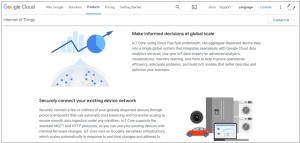
This week, Google Cloud made the announcement that it will be discontinuing its IoT Core service, allowing customers a one-year timeframe to transition to a partner for the management of their IoT devices. Google believes that relying on partners to handle the process on behalf of customers is a more effective approach. A Google spokesperson explained, "Since the launch of IoT Core, it has become evident that our customers' needs can be better met by our network of partners who specialize in IoT applications and services. We have diligently worked to offer customers migration options and alternative solutions, and we are providing a year-long transition period before discontinuing IoT Core."
2022. Google expands Vertex, its managed AI service, with new features
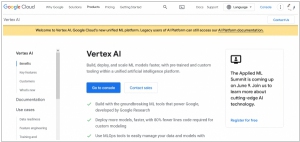
Roughly one year ago, Google introduced Vertex AI, a managed AI platform designed to expedite the deployment of AI models for businesses. Today, Google has announced upcoming enhancements for Vertex, including a dedicated server for AI system training and the introduction of "example-based" explanations. As Google has consistently emphasized, Vertex offers the advantage of integrating Google Cloud services for AI within a unified user interface (UI) and application programming interface (API). According to Google, notable customers such as Ford, Seagate, Wayfair, Cashapp, Cruise, and Lowe's utilize Vertex to construct, train, and deploy machine learning models within a single environment, effectively transitioning from experimental stages to production.
2019. VMware completes $2.7 billion Pivotal acquisition
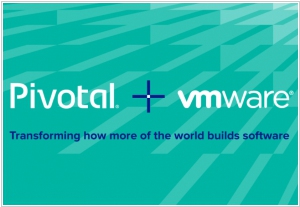
VMware has successfully completed the $2.7 billion acquisition of Pivotal, a private cloud platform. This acquisition serves as another crucial step for VMware as it strives to transition from solely a virtual machine company to a cloud-native provider capable of managing infrastructure across various environments. This addition aligns with VMware's recent acquisitions of Heptio and Bitnami, further reinforcing its strategic vision. The ultimate goal is to seamlessly integrate these developments into VMware Tanzu, a comprehensive management platform designed to unify Kubernetes containers and VMware virtual machines.
2019. Google Cloud gets a new family of cheaper general-purpose compute instances
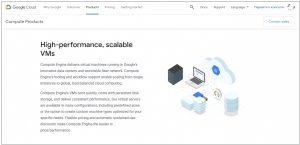
Google Cloud has recently introduced its new E2 family of compute instances, specifically designed for general-purpose workloads. These instances offer a significant cost advantage, delivering savings of approximately 31% when compared to the existing N1 general-purpose instances. Moreover, the new system incorporates enhanced intelligence in terms of VM placement, granting the flexibility to migrate them to alternative hosts as required. To achieve these advancements, Google has developed a custom CPU scheduler. Unlike comparable alternatives offered by other cloud providers, E2 VMs from Google can sustain high CPU loads without artificial throttling or complex pricing structures. It will be intriguing to witness benchmark tests that compare the performance of the E2 family against similar offerings from AWS and Azure.
2018. Google Cloud adds new applications performance monitoring tool
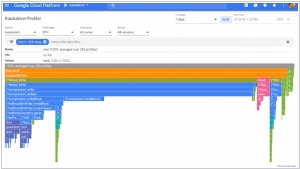
Google has introduced a significant addition for developers working on applications within the Google Cloud Platform. They now have access to a comprehensive suite of application performance management tools known as Stackdriver APM. This suite empowers developers to directly track and address issues within the applications they have built, eliminating the need to rely solely on operations teams. The underlying idea is that developers, being intimately familiar with the code, are best positioned to comprehend the signals emanating from it. Stackdriver APM consists of three primary tools: Profiler, Trace, and Debugger. While Trace and Debugger were already available, the integration of Profiler allows all three tools to seamlessly collaborate in identifying, monitoring, and resolving code-related issues.
2018. Google Compute Engine adds simple machine learning service
Google has introduced AutoML, a groundbreaking service available on Google Compute Engine that empowers developers, even those without prior machine learning (ML) expertise, to construct personalized models for image recognition. The scarcity of machine learning experts and data scientists in today's market is widely acknowledged. To address this challenge, Google's new service enables virtually anyone to submit their images, upload them (and import or create tags within the application), and automatically generate a custom machine learning model using Google's advanced systems. The entire process, from data importation to tagging and model training, is facilitated through a user-friendly drag and drop interface. It's important to note that this service goes beyond the capabilities of Microsoft's Azure ML studio, which offers a Yahoo Pipes-like interface for model building, training, and evaluation.
2017. Google Cloud Platform cuts the price of GPUs by up to 36 percent
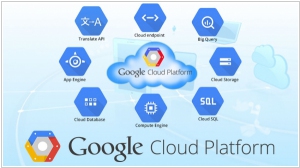
Google is implementing a price reduction for Nvidia's Tesla GPUs on its Compute Engine service, with savings of up to 36 percent. In U.S. regions, the cost of utilizing the slightly older K80 GPUs has been reduced to $0.45 per hour, while the more advanced and powerful P100 machines will now cost $1.46 per hour, both with per-second billing. By doing so, Google aims to attract developers who seek to execute their own machine learning workloads on its cloud platform. Additionally, various other applications, such as physical simulations and molecular modeling, can greatly benefit from the extensive number of cores provided by these GPUs.
2017. VMware Cloud is now live on Amazon Web Services
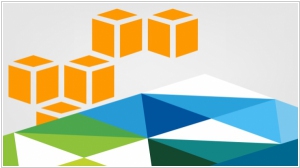
Last autumn, VMware and AWS announced a strategic partnership, and now they have unveiled a unified solution for enterprises called VMware Cloud on AWS. VMware Cloud on AWS offers customers a seamlessly integrated hybrid cloud environment that maintains consistent architecture, capabilities, and operational experience across their on-premises vSphere-based infrastructure and AWS. Although AWS operates its own virtual machines (VMs), they differ from those used by VMware in data centers. This disparity poses management challenges for companies seeking to utilize both platforms. By enabling organizations to migrate to AWS while retaining their VMware VMs in the public cloud, they can enjoy the benefits of both worlds without encountering management complexities.
2017. Google Cloud Platform gets a cheaper, lower-performance networking tier
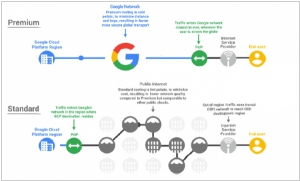
Google is introducing a new networking option for users of its Cloud Platform that offers a more affordable solution. Developers now have the choice between a premium tier, which prioritizes routing traffic over Google's high-speed networks to minimize distance and hops, and a standard tier, which relies on the public internet with potential slowdowns and additional hops. The standard tier is priced 24-33 percent lower than the premium tier in North America and Europe. However, Google applies different pricing models to each tier. The premium tier's pricing is based on the source and destination of the traffic, accounting for the distance it travels over Google's network. In contrast, the standard tier's prices are determined solely by the source location. This new offering provides Cloud Platform users with increased flexibility and cost savings depending on their networking requirements.

